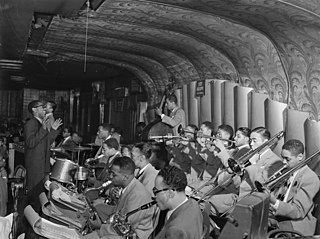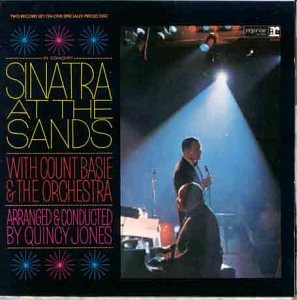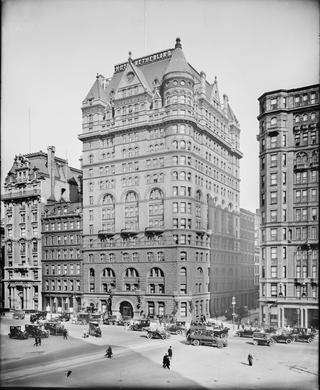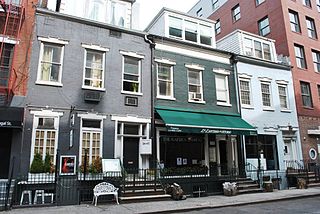Related Research Articles

Malcolm X was an American Muslim minister and human rights activist who was a prominent figure during the civil rights movement. A spokesman for the Nation of Islam (NOI) until 1964, he was a vocal advocate for Black empowerment and the promotion of Islam within the Black community. A posthumous autobiography, on which he collaborated with Alex Haley, was published in 1965.

The Savoy Ballroom was a large ballroom for music and public dancing located at 596 Lenox Avenue, between 140th and 141st Streets in the Harlem neighborhood of Manhattan, New York City. Lenox Avenue was the main thoroughfare through upper Harlem. Poet Langston Hughes calls it the "Heartbeat of Harlem" in Juke Box Love Song, and he set his work "Lenox Avenue: Midnight" on the legendary street. The Savoy was one of many Harlem hot spots along Lenox, but it was the one to be called the "World's Finest Ballroom". It was in operation from March 12, 1926, to July 10, 1958, and as Barbara Englebrecht writes in her article "Swinging at the Savoy", it was "a building, a geographic place, a ballroom, and the 'soul' of a neighborhood". It was opened and owned by white entrepreneur Jay Faggen and Jewish businessman Moe Gale. It was managed by African-American businessman and civic leader Charles Buchanan. Buchanan, who was born in the British West Indies, sought to run a "luxury ballroom to accommodate the many thousands who wished to dance in an atmosphere of tasteful refinement, rather than in the small stuffy halls and the foul smelling, smoke laden cellar nightclubs ..."

Braddock Heights is an unincorporated community and census-designated place (CDP) in Frederick County, Maryland, United States. The population was 2,608 at the 2010 census. The local ZIP codes are 21714 and 21703.

The Audubon Theatre and Ballroom, generally referred to as the Audubon Ballroom, was a theatre and ballroom located at 3940 Broadway at West 165th Street in the Washington Heights neighborhood of Manhattan, New York City. It was built in 1912 and was designed by Thomas W. Lamb. The theatre was known at various times as the William Fox Audubon Theatre, the Beverly Hills Theater, and the San Juan Theater. The ballroom is noted for being the site of the assassination of Malcolm X on February 21, 1965. It is currently the Audubon Business and Technology Center, which is part of Columbia University's Audubon Research Park.

Hotel Astor was a hotel on Times Square in the Midtown Manhattan neighborhood of New York City, United States. Built in 1905 and expanded in 1909–1910 for the Astor family, the hotel occupied a site bounded by Broadway, Shubert Alley, and 44th and 45th Streets. Architects Clinton & Russell designed the hotel as an 11-story Beaux-Arts edifice with a mansard roof. It contained 1,000 guest rooms, with two more levels underground for its extensive "backstage" functions, such as the wine cellar.

Orchard Street is a street in Manhattan which covers the eight city blocks between Division Street in Chinatown and East Houston Street on the Lower East Side. Vehicular traffic runs north on this one-way street. Orchard Street starts from Division Street in the south and ends at East Houston Street in the north..

The Palladium Ballroom was a New York City night club. The US mambo craze that started in 1948 began at the Palladium Ballroom. On March 15, 1946, it opened at the northeast corner of Broadway and 53rd Street.

The Charles Playhouse is a theater at 74 Warrenton Street Boston in the Boston Theater District. The venue comprises an approximately 500-seat mainstage, which hosts the long-running Blue Man Group, and a 200-seat second stage that hosted Shear Madness until March 2020.

Masjid Malcolm Shabazz, formerly known as Mosque No. 7, is a Sunni Muslim mosque in Harlem, New York City. It was formerly a Nation of Islam mosque at which Malcolm X preached, until he left it for Sunni Islam in 1964.
"Jumpin' at the Woodside" is a song first recorded in 1938 by the Count Basie Orchestra, and considered one of the band's signature tunes. When first released it reached number 11 on the Billboard charts and remained on them for four weeks. Since then, it has become a frequently recorded jazz standard.

133rd Street is a street in Manhattan and the Bronx, New York City. In Harlem, Manhattan, it begins at Riverside Drive on its western side and crosses Broadway, Amsterdam Avenue, and ends at Convent Avenue, before resuming on the eastern side, crossing Seventh Avenue, and ending at Lenox Avenue. In Port Morris in the Bronx, it runs from Bruckner Boulevard/St. Ann's Place to Locust Avenue. The block between Seventh Avenue and Lenox Avenues was once a thriving night spot, known as "Swing Street", with numerous cabarets, jazz clubs, and speakeasies. The street is described in modern times as "a quiet stretch of brownstones and tenement-style apartment houses, the kind of block that typifies this section of central Harlem".

The Malcolm X and Dr. Betty Shabazz Memorial and Educational Center, also called the Shabazz Center, is a memorial to Malcolm X and Betty Shabazz located at 3940 Broadway and West 165th Street in the Washington Heights neighborhood of Manhattan, New York City. The building which once housed the Audubon Ballroom, where Malcolm X was assassinated on February 21, 1965. It opened on May 19, 2005, the 80th anniversary of Malcolm X's birth.

88 Basie Street is a 1983 studio album by Count Basie.
Terminal Bar was a bar on Times Square in New York City at 41st Street and 8th Avenue. It had a reputation as one of the roughest bars in the city and was located across from the Port Authority Bus Terminal. Terminal Bar originally had a mainly Irish American clientele, but over time evolved into a predominantly African American and gay bar.

Sinatra at the Sands is a live album by Frank Sinatra accompanied by Count Basie and his orchestra, and conducted and arranged by Quincy Jones, recorded live in the Copa Room of the former Sands Hotel and Casino in Las Vegas in 1966.
Southland was a ballroom/cafe on Warrenton Street in Boston, in the United States, in what is now the Charles Playhouse. Originally a church, converted into a club, is best known for featuring prominent jazz artists of the 1930s and 1940s such as Count Basie, Duke Ellington, Cab Calloway, Jimmie Lunceford, and many others. Southland was connected to the radio and it became a notable venue for broadcasting jazz over the radio in the 1940s. On 19 February 1940, Count Basie and his Orchestra opened a four-week engagement at Southland which was broadcast on 20 February. Southland's entertainment also featured dancers such as Rubberlegs Williams, who also sang with Basie on numerous occasions.

Hotel New Netherland was located at the northeast corner of Fifth Avenue and 59th Street, in Manhattan, New York City, New York, in what is now the Upper East Side Historic District. It contained the Sherry's restaurant from 1919 until its demolition in 1927.

La Lanterna di Vittorio is a cafe and pizzeria at 129 MacDougal Street, Greenwich Village, New York City. The restaurant is situated in a restored townhouse and serves Italian cuisine. It is noted for its Bar Next Door room in the basement which hosts regular live jazz and rock performances. The basement is characterized by "low ceilings, and exposed brick and romantic lighting". In 2007, Jazz Education Journal referred to it as "One of NYC's great secrets for a first-class jazz experience." The Jonathan Kreisberg Trio are regular performers at the clubs on Wednesdays.

The City Hotel (1794–1849) stood at 123 Broadway, occupying the whole block bounded by Cedar, Temple, and Thames Streets, in today's Financial District of Manhattan, New York City. It was the first functioning hotel in the United States. Until the early 1840s it was the city's principal site for prestigious social functions and concerts. Designed by John McComb Jr., it offered not only luxurious accommodations, but also such amenities as shops, a barroom, and a coffeehouse, as well as public dining and dancing. Its five stories and 137 rooms replaced the former home of Stephen Delancey, built around 1700, which had become an inn.
References
- ↑ Wald, Alan M. (2007). Trinity of Passion: The Literary Left and the Antifascist Crusade. Univ of North Carolina Press. p. 284. ISBN 978-0-8078-3075-8.
- ↑ Gormley, Beatrice (2008). Malcolm X: A Revolutionary Voice. Sterling Publishing Company, Inc. p. 38. ISBN 978-1-4027-5801-0.
- ↑ Music in the USA : A Documentary Companion: A Documentary Companion. Oxford University Press. 28 August 2008. p. 541. ISBN 978-0-19-803203-8.
- ↑ Wainstock, Dennis (2009). Malcolm X, African American Revolutionary. McFarland. p. 12. ISBN 978-0-7864-3934-8.
- ↑ Basie, Count (2002). Good Morning Blues: The Autobiography of Count Basie. Da Capo Press. p. 226. ISBN 978-0-306-81107-4.